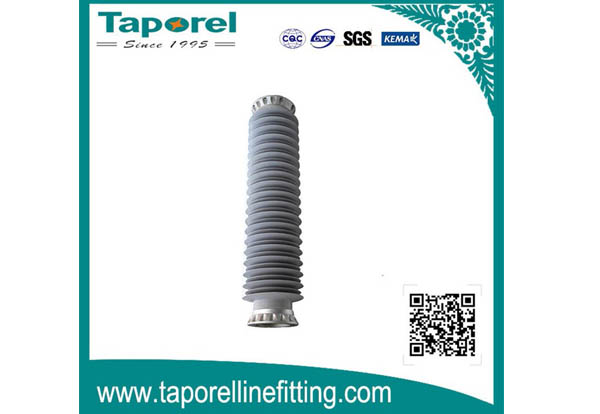Composite insulators have been introduced as a good alternative to ceramic and glass insulators. After almost 30 years of the introduction of the first type of composite insulators and design improvements and consumable materials, they are used as well-known and suitable products for high voltage.
In resin insulators, the oxygen component is made into a polyether type with certain plastics; that is, with the combination to produce macromolecules. To harden the compound, additional materials such as quartz are usually added, and finally, the resin is made by heating and casting. These types of insulators are not used in open spaces because they lack UV radiation in sunlight and are only used in interior spaces and inside panels. Composite insulators consist of at least two insulating materials; one of them is tasked with providing electrical properties and the other with providing mechanical properties.
Composite insulators are weather resistant and have good self-cleaning properties in wind and rain, so they require only one pollution check every 4-5 years and require less time for maintenance and outages. Due to the higher tensile strength of the core rods, the overall weight of composite insulators is very light. They weigh only 10-20% of the weight of a string of porcelain insulators of the same voltage class. Their length can be shortened by more or less 10% at the same voltage level, which can greatly reduce the labor of workers in transportation and field operations.

Composite Insulator
Due to the small diameter of the umbrella skirt of composite insulators, the minimum arc distance is smaller than that of porcelain insulator strings of the same length, and the lightning resistance level is also smaller than that of porcelain insulator strings of the same length.
After a lightning strike, the only effect on the composite insulators is some white galvanic corrosion; there is no change in their insulating properties. However, attention must be paid to the corrosion at the ends of the tubing.
The inner insulation distance of composite insulators is almost equal to the outer insulation, and the structure belongs to the group of anti-breakdown insulators, so there is no problem of having to test zero-value insulators, which greatly reduces the operation and maintenance workload.
The umbrella skirt and sheath material of the composite insulator is silicone rubber with a low-energy surface. The composite insulator has a large creepage distance, a small umbrella skirt diameter, and a hydrophobic and hydrophobic migrating surface. Even in a humid and polluted environment, the umbrella skirt surface of composite insulators does not form a continuous water film; therefore, its anti-pollution performance is better than that of porcelain insulators.
The main component of the composite insulator is the silicone rubber sheath. Silicone rubber is formed by bonding polymers of polydimethylsiloxane and organic oxygen compounds; the main chain is formed by silicon-oxygen bonds. Due to the high bond energy of silicon-oxygen bonds, it has good thermal stability and can work at temperatures from -100 to +350°C. Silicone rubber has good ozone resistance properties, and while butadiene - propylene butadiene rubber can readily decompose under room temperature tension to 150 ppm of ozone, however, silicone rubber can last for months without being broken.
Taporel Electrical Insulation Technology Co., Ltd.
+86 29 8603 0621
No. 209 Jincheng Road, Jintan District, Changzhou City, Jiangsu Province, China
Copyright © Taporel Electrical Insulation Technology Co., Ltd. All Rights Reserved | Sitemap
